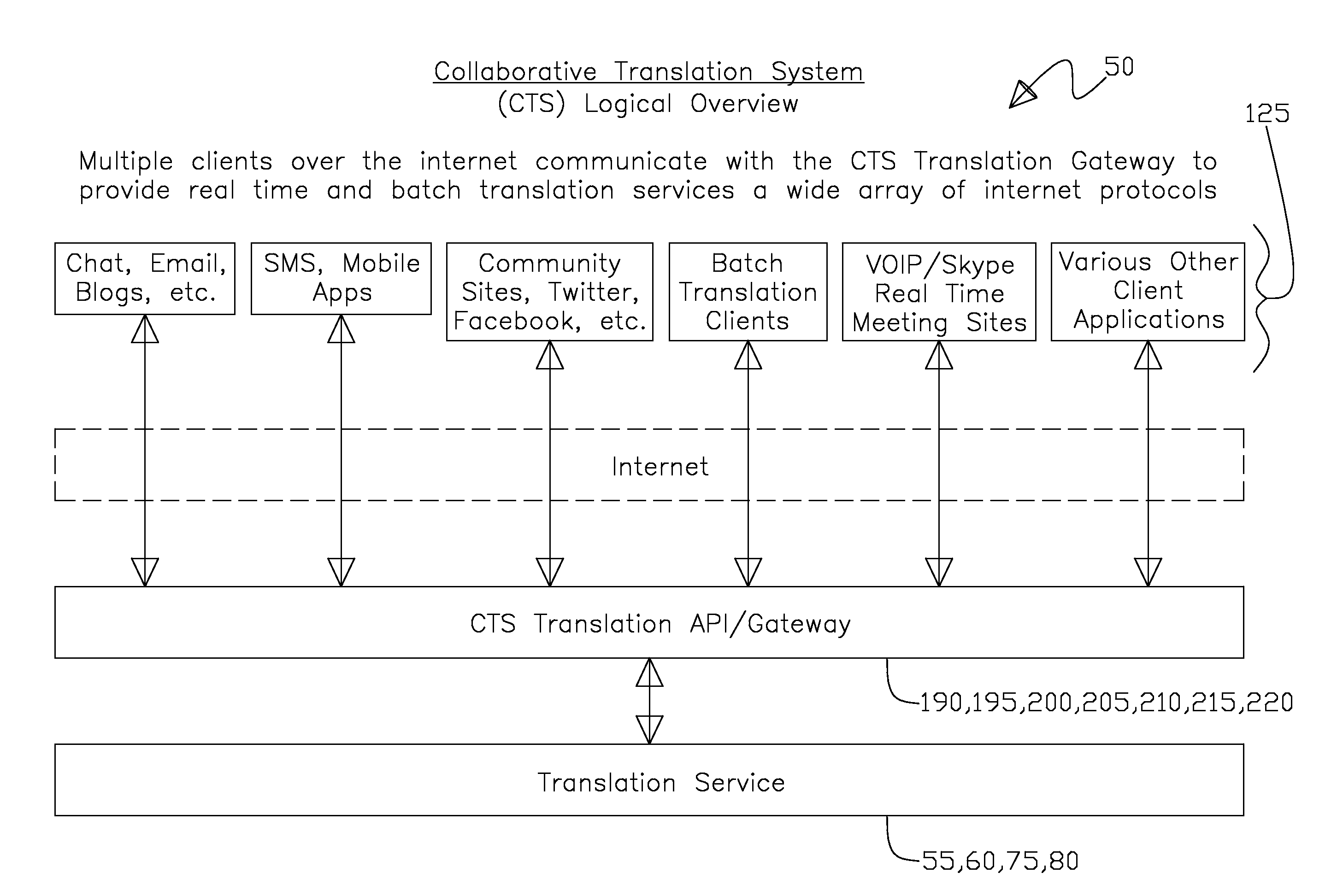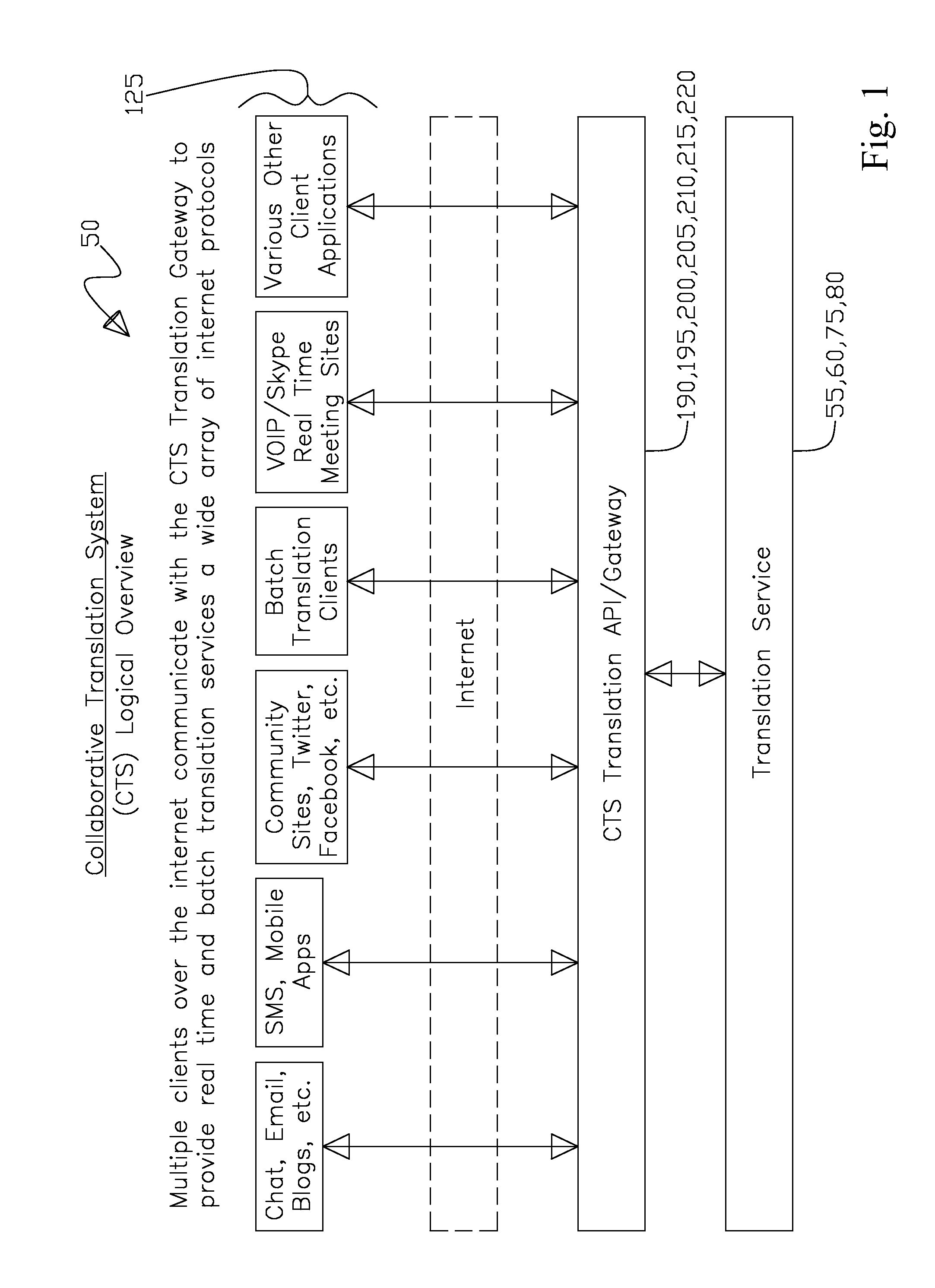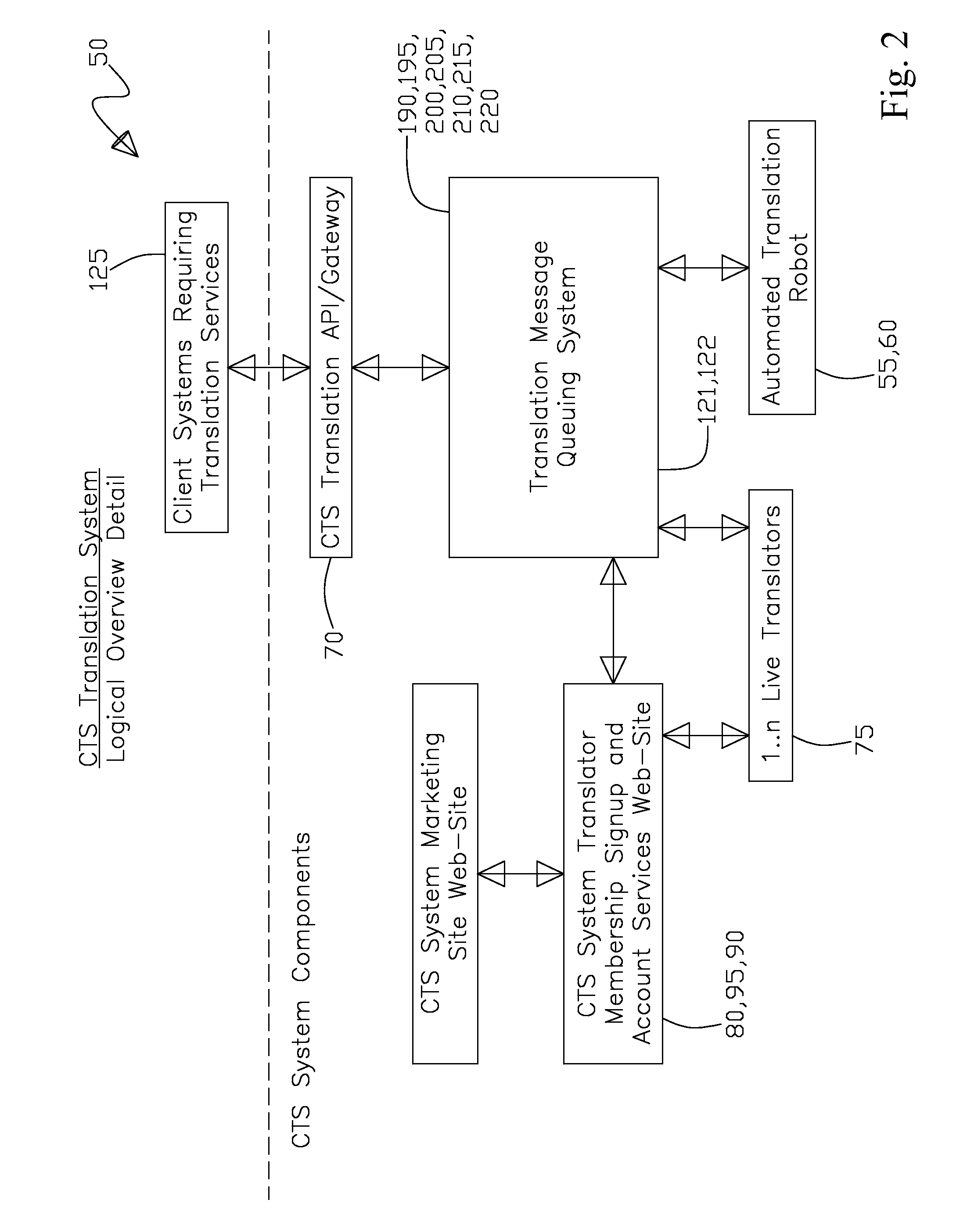Collaborative Language Translation System
a collaborative translation and language technology, applied in the field of language translation systems, can solve the problems of increasing the number of errors, and increasing the chance of translation errors
- Summary
- Abstract
- Description
- Claims
- Application Information
AI Technical Summary
Benefits of technology
Problems solved by technology
Method used
Image
Examples
Embodiment Construction
[0075]The Collaborative Translation System (CTS) is a web based product that offers real-time and batch translation services to clients over the World Wide Web. It is protocol agnostic, meaning it can provide its services via all the major internet protocol and data types. It solves the issues raised by inaccuracies of language translation software products by providing a real time system by which human agents may translate all or part of the client messages as desired.
[0076]The human member agents are provided with a web-based support system and software in which they may provide translations according to their own schedule. When logged in—they may translate messages as sent to them and are paid according to their speed, proficiency, and quantity of translation. In this way, the goal is to offer a service to entice multi-lingual people world-wide to join the CTS translation community and make money for translating content in batch and real time—as a way to better organize the benef...
PUM
 Login to View More
Login to View More Abstract
Description
Claims
Application Information
 Login to View More
Login to View More - R&D
- Intellectual Property
- Life Sciences
- Materials
- Tech Scout
- Unparalleled Data Quality
- Higher Quality Content
- 60% Fewer Hallucinations
Browse by: Latest US Patents, China's latest patents, Technical Efficacy Thesaurus, Application Domain, Technology Topic, Popular Technical Reports.
© 2025 PatSnap. All rights reserved.Legal|Privacy policy|Modern Slavery Act Transparency Statement|Sitemap|About US| Contact US: help@patsnap.com



